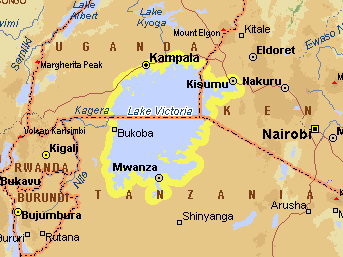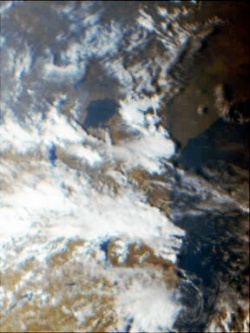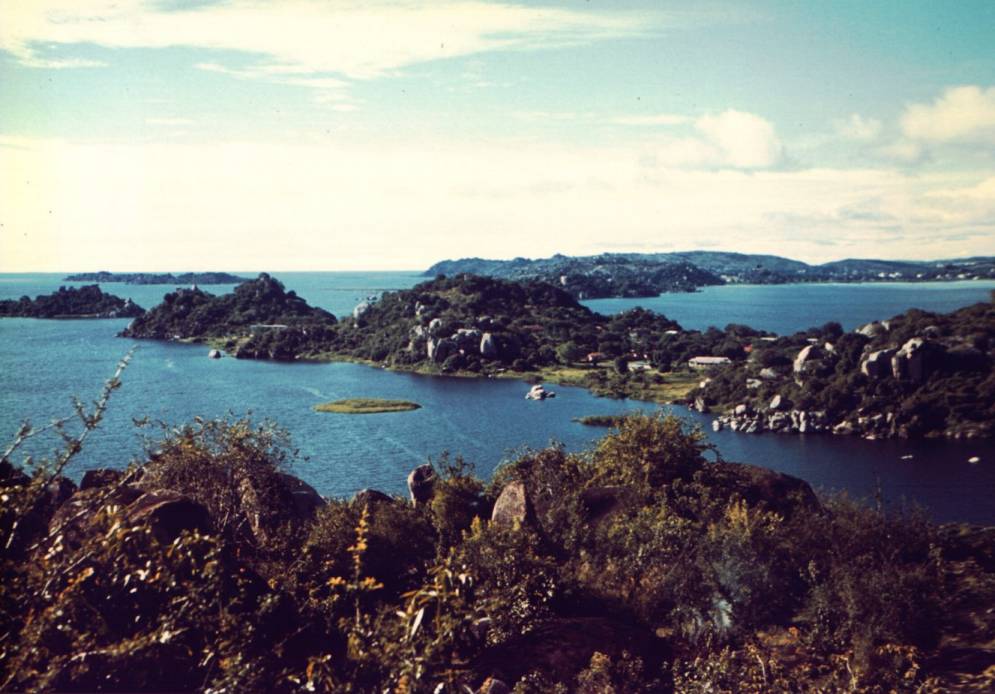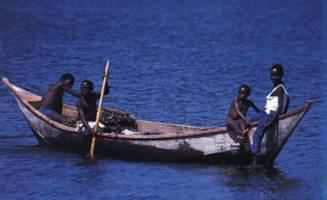
| Waterpropeties | |
|---|---|
| pH | 6,9 - 9,0 |
| dGH | 1-8 |
| KH | 2-3 |
| Temperature | 21-30°C |
| Conductance | 60-145 mS/cm² |
Geographical Position

With a surface area of approximately 68000 m² and diameter 300 km, lake Victoria is one of the largest tropical lakes in the World. Its greatest depth is 85m although it averages just 20m deep, this makes lake Victoria the flattest of the three Great Lakes (lakes Tanganyika, Malawi and Victoria) of the east African rift valley. The lake is situated 1134m above sea level. Scientists believe that lake Victoria is 250,000 to 750,000 years old. Thousands of years ago the region was a large swamp instead of the lake, but this is a tectonically active area, so after a period of time there was a basin, into which the rivers of that region flowed. Initially, there were many small and separate lakes, which eventually formed into lake Victoria as water levels rose. So far as we know now, the lake Victoria basin was completely dry 12,400 years ago. This had to be quite an experience for the animals that lived in the lake.
Population

Lake Victoria is a natural border for three countries: Uganda, Tanzania and Kenya. People settled in this region for many thousands of years. In fact, the original fishermen were forced to catch fish during the hard droughts. That is one of the biggest problems of this region. Therefore, people are very poor here. Additionally, Uganda has long suffered from a civil war. The region is very much in turmoil.
Fish of Lake Victoria

Lake Victoria has 12 fish families with
approximately 550 species from 28 different genus. Of these, 20 genus
and 38 species are not cichlids, 16 species are endemic in Lake Victoria.
Up until 1994 over 400 various cichlids had been discovered (Seehausen&
Witte 1994), possibly created from one cichlid flock with other Haplochromis
from lakes Kyoga, Edward, George; Kiwu and other small lakes of the
region. Four Victorian cichlids (Astatoreochromis alluaudi, Pseudocrenilabrus
multicolor victoriae, Oreochromis esculentus, O. variablis), as well
as 4 intoduced species (O. niloticus, O. leucostictus, Tilapia zillii,
T. rendalli) do not belong to this endemic flock. Many species have
not been fully described and hold only provisional names. New species
are discovered each year and that is why it will be many years before
all the species receive their scientific names. Some cichlids are believed
to have become extinct even before they were discovered (see "Extinction").
Scientists estimate that in the 70's the lake was inhabited by more
then 500 endemic cichlid species!
Since the 1970's scientists have explored lake Victoria. The interest
in the cichlids of lake Victoria is still growing.

Therefore you can find at least two reasons for continued interest in the flock
1. Evolution of Furu (native word for victoriancichlids, like "Mbuna"
for cichlids of Lake Malawi)
2. Extinction of Furu